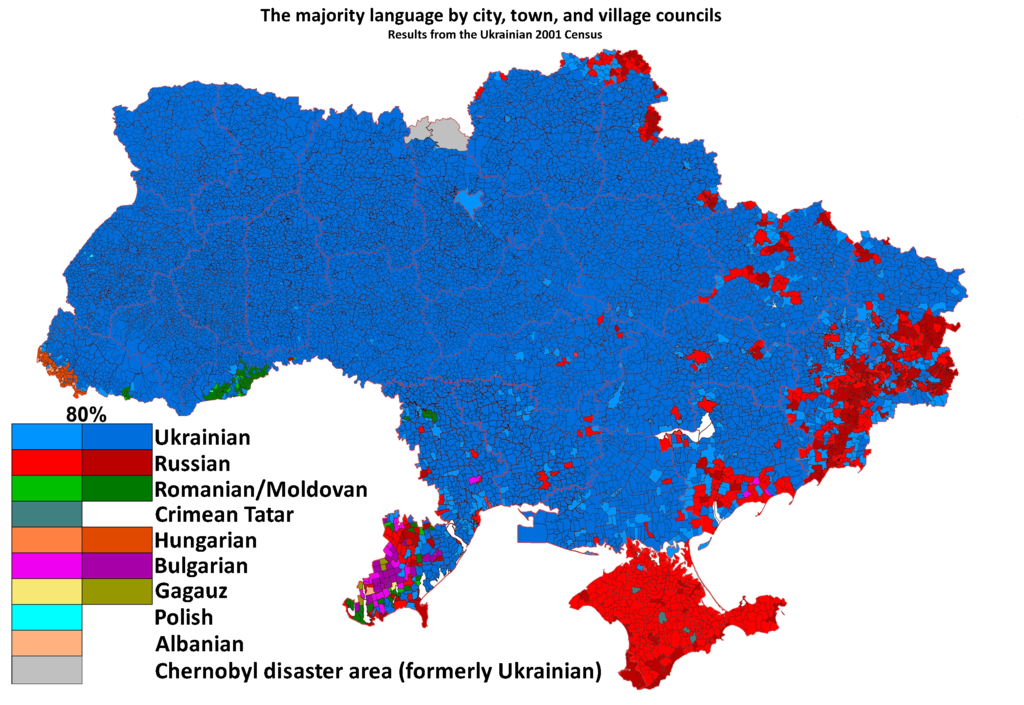Hybrid Warfare is the stuff of nightmares for the military and political leadership of NATO. Ambiguous and hard to detect, it falls short of NATO definitions of armed conflict and therefore below thresholds on the decision to use force against it. Hybrid Warfare can be described as a plausibly deniable attack by a state using all its tools of national power to achieve a political result, as opposed to conventional warfare in which the state takes military action overtly and directly.
Allegedly employed by Russia against the Crimea in 2014, Hybrid War was intended to resemble a grassroots response by an ethnic Russian minority oppressed by the Ukrainian government. In reality, the Crimean campaign, like all Hybrid Warfare, required specific conditions for its success and great preparation to guarantee its effectiveness. It is not reactionary, it is revolutionary, and it is a foreign policy tool of the Russian state.
But Hybrid War as seen in Crimea — and later in the Donbass region of eastern Ukraine — is not new nor is it unique to Russia. Other states and non-state actors have used similar tactics to overthrow governments in the past and they will do so again. What makes the Crimean case especially troubling is that it was used to carve off a piece of a state rather than overthrow its government entirely. This precedent opens a large number of sub-state trouble spots globally to new and tempting possibilities. Nowhere is this more relevant than in the South China Sea where many of the requisite conditions exist for Hybrid War to succeed in the hands of China, which has gone a long way towards developing the mindset and the tools required to wrest control of relevant pieces of territory from its neighbors.
Hybrid Muddle
Any responsible discussion about Hybrid Warfare should begin with a definition. Unfortunately the NATO heads of state and government began using the buzzword to describe policy responses to Hybrid War before the Alliance had time to define the term. The result is a broad spectrum of seemingly disparate Allied and national activities designed to counter Hybrid War. Everything from the American deployment of a tank brigade in the Baltic states to establishment of a Strategic Communications Center is described as a counter to the Hybrid threat.
Terrorists are said to use Hybrid tactics, and naval vessels and fighter planes are training against Hybrid War scenarios. It seems at times to be the embodiment of a “something must be done” defense policy — a damaging and self-defeating knee jerk. In some ways however, NATO’s broad response may actually be appropriate.
Canadian scholar Paul Taillon argues Hybrid War is simply a new manifestation of the Soviet concept of “political war” more commonly known as “active measures”:
‘a forceful expression of national policy that forces a nation state to submit by eroding its will and capability‘, active measures include a ‘spectrum of politico-military stratagems including, among other things, employment of overt and covert operations, agents of influence, subversion, special operations, propaganda, foreign-policy manipulation, deception, and psychological operations, as well as orchestrating the support of foreign elements to act as proxies‘. (Taillon 2014)
Though the force of choice for implementing these stratagems on foreign soil are Special Operations Forces (SOF), the stratagems themselves are mostly political tools supported by very carefully controlled military operations and not the other way around. Victory however is not assured. These stratagems depend on pre-existing conditions or weaknesses in the targeted society: “resistance potential.”
Though never specifically defined, the basic conditions of resistance potential are not difficult to deduce. First and foremost there must be a disaffected community with an identity distinctly different from the one in power. The disaffected must have a communal grievance and a geographic concentration that links their identity and grievances to the terrain. Critically, success in Hybrid Warfare requires weak governance in targeted areas, particularly in matters of security. In this way, corruption, lack of resources, and uneven wealth distribution become important aspects of resistance potential. Though these conditions are more or less easily identifiable, measuring them in order to effectively allocate and prioritize resources is a fine art that requires great experience and cultural understanding. In other words, Hybrid Warfare works best between neighbors.
Resistance potential was high in the Crimea in 2014 where the ethnic-Russian community comprised 67% of the population. Though Russian speakers comprise only 17.3% of Ukraine’s total population, they had a distinct geographic concentration in the Crimea and the cities of the Donbass where they had latent but well-known grievances setting them apart from those in power in Kiev. They felt threatened by the transfer of political rights to the growing Muslim Tatar population, and had concerns about linguistic marginalization. Their general disconnectedness from the central government forced Kiev to rule through local structures. In addition to the Crimean Parliament, which implemented wide autonomy under the Ukrainian constitution, the Tatars also had their own governing council called the Mejlis. By comparison, Kievan governance seemed remote, filtered, and corrupt.

Even with such a seemingly clear-cut case of high resistance potential, Russia required most, if not all of the active measures stratagems to achieve its desired political result. Shortly after the Maidan Uprising that ousted then-President Yanukovych of Ukraine, masked, uniformed, and mysteriously well-armed troops began occupying government buildings across Crimea. The uniformity, professionalism, high-tech equipment, and coordination strongly suggested they were more than pro-Russian Crimean self-defense forces as they were described by Russian news sources. Supported by crowds of Russian-speaking thugs, these forces systematically dismantled the tools of Ukrainian state sovereignty in Crimea, blocked a Ukrainian military response, installed pro-Russian politicians (many with known links to Russian organized crime), and hastily arranged a Crimea-wide referendum on whether to declare independence or simply “rejoin” Russia. Emboldened by — or perhaps intimidated by — a Russian authorization to deploy troops to “Ukrainian territory” to protect vulnerable ethnic Russians, voters approved the referendum to rejoin Russia with a 97% majority before any international observers could arrive to verify the results. The true legality of the situation may never be known as Crimea is now effectively a part of Russia which claims, however implausibly, its actions were a defense of the self-determination of peoples.
To be certain, Russia has used more aggressive tactics in similar situations in the past. The 2008 invasion of Georgia is just one example, leading us to ponder why, if Ukrainian governance was so weak in Crimea, Moscow used Hybrid Warfare there instead of the more muscular actions applied in South Ossetia. The reason of course, is Ukraine’s physical and political proximity to NATO made any overwhelming use of conventional force by Moscow a potential threat to the Alliance. The imprecise calculations of deterrence politics so close to NATO’s Article 5 frontier meant the seizure of Crimea had to fall well below the Alliance’s decision thresholds for the use of military force lest Russia’s actions provoke an overwhelming defensive response by Brussels.
When so much of Hybrid War’s success or failure relies on the manipulation of perceived identity and grievance, it is nearly impossible for any government, let alone a large and diverse 28-nation alliance, to be completely certain of the legal appropriateness of using force. It is precisely this ambiguity and the incremental, arguably legal nature of Hybrid stratagems that makes them effective and attractive as a foreign policy option.
Divide and Confuse
Thoughtful observers of global security are naturally alert for signs Hybrid Warfare is proliferating from its home in Crimea to other parts of the world. There is certainly no shortage of resistance potential as stateless nations and disaffected minorities everywhere find their voices amplified by the internet. As long as there is potential for resistance, relevant actors — state and non-state — will maintain a capability to exploit it using Hybrid Warfare. Among these are the United States and China which both maintain organizations trained and equipped to use the stratagems of active measures. In China, Hybrid War is the domain of the Fisheries Law Enforcement Command, the Coast Guard, and an organization called the Maritime Militia which has an ambiguous legal status linking it to both private industry and the military.
Having capability however, does not prove it is being used for Hybrid Warfare and even if it is, proving that its use is somehow connected to Russian success in Crimea is another matter entirely. Knowing this and scanning the world for Hybrid War, our eyes continually return to the area where the two Hybrid superpowers collide: the South China Sea.
The South China Sea is one of the world’s richest arenas for competition between the economic and cultural spheres of India, China, the United States, and to a lesser degree, the Islamic Middle East. Claimed by no fewer than five nations on its periphery — six counting Taiwan — two of which, Vietnam and Indonesia, are rising regional powers, and one, China, which aspires to global relevance, the South China Sea is a resource rich and geographically severe choke point. Its waters are managed on two levels: nationally by claimant states, and internationally by the Association of Southeast Asian Nations (ASEAN). Though ASEAN’s grip is divided and intentionally weak, it is one of the mechanisms by which the United States seeks to prevent China from turning the entirety of the South China Sea into its territorial waters, barred to the innocent passage of American warships of the 7th US Fleet which, for the moment, is the real power that polices the region.
ASEAN and its member states all exhibit resistance potential which China attempts to exploit by isolating Vietnam and the Philippines, and weakening rival-nation control of areas adjacent to the Spratly, Paracel, and Pratas Island chains. To the extent that we can consider ASEAN a unified political entity, it is a fractured one at best. Its member states feature extreme cultural differences and long histories of conflict with one another. There are numerous examples of ongoing territorial disputes between them, many of which affect the waters of the South China Sea itself. In this way, each claimant state resembles an identifiable minority group with a geographic concentration and grievances against its neighbors if not against its capital in Jakarta. ASEAN’s governance is weak. Its decision-making processes are not rule based and are subject to the corruption of horse-trading. It has no police, no intelligence service, no Army or Navy. Its raison d’être is in keeping its members from interfering in each other’s internal politics and thus it is vulnerable to having parts of its territory carved away by active measures.

The situation is far less certain at the national level. Resistance potential within Southeast Asian nations resides largely in a very visible Chinese minority –- the Straits Chinese -– that has throughout history been the target of violent mass grievance inflamed for cynical domestic political reasons. China largely ignored the plight of the Straits Chinese for centuries except for a historically brief period between 1949 and 1972 when Beijing supported Communist movements throughout Southeast Asia.
Despite its historical ambivalence, China’s claim to the South China Sea is based in part on the exploratory voyages that brought the Straits Chinese to Southeast Asia to begin with. It is not a stretch therefore, to imagine that the Straits Chinese may represent a conduit for Hybrid Warfare. To be certain, Vietnam, Malaysia, Indonesia, and the Philippines all harbor this concern about their Chinese minorities though there is no evidence China is even considering agitating the Straits Chinese for political purposes.
Beijing is cautious for good reason. Resistance potential of the Straits Chinese is not as high as it may seem. The peninsular and archipelagic states of Southeast Asia do not provide useful areas of sanctuary where insurgents can thrive. Thailand, Indonesia, and Malaysia all successfully defeated ethnic Chinese-led insurgencies since the Second World War and if anything, the potential for resistance has decreased since then. Ethnic Chinese citizens of Southeast Asian nations (other than Singapore) do not dominate any geographic regions nor do they control any of the institutions of state. Perhaps surprisingly, their cultural connection to China is not to Beijing, but to Fujian and Guangdong provinces, from which their ancestors fled privation or persecution, in some cases at the hands of the government in Beijing. Furthermore, the Straits Chinese have enjoyed a relatively high standard of living when compared with their fellow countrymen from majority groups.
Though Southeast Asia is home to a number of other disaffected, even insurgent groups, these are all ideologically or culturally opaque for Chinese Hybrid Warfare actors. None of these groups reside in the uninhabited seascape under contention. Unlike in Crimea where Russia was able to weaken and replace Ukrainian governance with ethnic Russians as a prelude to a political maneuver, Chinese Hybrid Warfare can at best weaken rival-nation control over the South China Sea. The situation simply lacks the finality offered by a follow-on political ploy.
Not Crimea
Though the situation in the South China Sea differs from that in Crimea primarily because the area under contention is an uninhabited seascape, there is no doubt China uses Hybrid Warfare to enable its increasing control. Whether these techniques and the motivation to use them are inspired by the Crimean case is a much harder question to answer. Indeed the 2014 drama between China and Vietnam over a drilling rig played itself out at a grassroots level with fishermen deployed from both sides to either harass or defend the rig. To what extent this can be considered government-sponsored Hybrid Warfare is debatable but it gives an indication that disputes in the area will be fought by actors of ambiguous legal status and authority. As in Crimea, where Hybrid War is used to advance Russian territorial ambitions without sparking a response by NATO, China calibrates it use of similar tactics to ensure its adversaries in the region do not draw the United States too actively into the contest.
Again, use of Hybrid Warfare tactics in the South China Sea does not prove a connection to events in Crimea. Indeed, publication of “Unrestricted Warfare” by the Chinese War College demonstrated a willingness to use Hybrid Warfare techniques as far back as 1999. However, the substantive difference with today’s efforts is that while Unrestricted Warfare was aimed at countering another state, today’s efforts in the South China Sea have sub-state territorial goals. If there is an observable connection between Russia’s success and China’s efforts, it is only in the mindset required to apply active measures for limited territorial gains. Though reassuring in the sense that Hybrid Warfare minimizes violence, herein lies the real danger to international security; that use of the techniques may proliferate to other states with similar territorial ambitions, exacerbating existing tensions or turning competition into conflict.
Lino Miani is a retired US Army Special Forces officer, author of The Sulu Arms Market, and CEO of Navisio Global LLC









